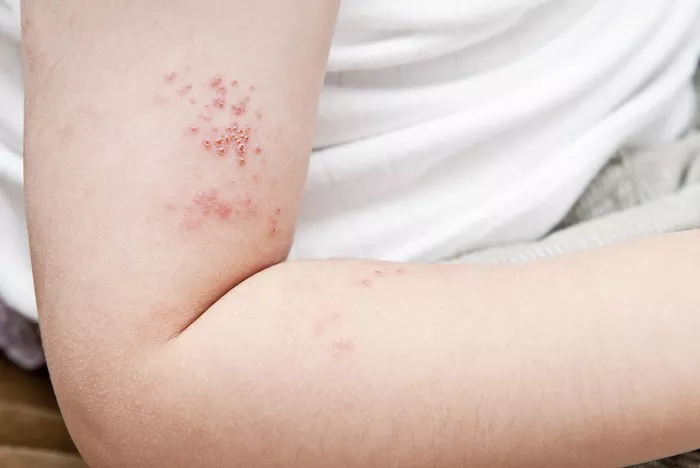Sunlight, with its warmth and radiance, has long been associated with vitality and good health. However, for individuals with hives, those unwelcome, itchy, and sometimes painful welts that appear on the skin, the relationship with the sun may not always be so benign. While some find relief in the sun’s rays, others experience exacerbation of their symptoms. Understanding the nuanced relationship between sun exposure and hives is crucial for managing this chronic condition effectively.
What are Hives?
Hives, also known as urticaria, are characterized by raised, red, itchy welts on the skin. They can vary in size and shape and often appear suddenly, disappearing just as quickly. Hives can be acute, lasting for a few hours to several weeks, or chronic, persisting for months or even years. The condition is usually caused by an allergic reaction, but other factors such as stress, infections, and certain medications can also trigger hives.
The Link Between Sun Exposure and Hives
For some individuals with hives, exposure to sunlight can trigger or worsen their symptoms. This phenomenon, known as solar urticaria, is a specific type of hives triggered by sunlight. Solar urticaria typically manifests within minutes of sun exposure and can range from mild itching to severe hives accompanied by systemic symptoms such as headache, nausea, and difficulty breathing.
The exact mechanism behind solar urticaria is not fully understood, but it is believed to involve the interaction between sunlight and certain chemicals in the skin, leading to the release of histamine and other inflammatory mediators. Histamine is a key player in allergic reactions and is responsible for the characteristic itching, redness, and swelling seen in hives.
Factors Influencing Sun Sensitivity in Hives
While some individuals with hives are sensitive to sunlight regardless of the time of day or season, others may experience symptoms only under specific conditions. Several factors can influence sun sensitivity in hives:
1. Intensity of UV Radiation: The intensity of ultraviolet (UV) radiation varies depending on factors such as time of day, season, and geographical location. Individuals with hives may be more sensitive to higher levels of UV radiation, which are typically experienced during midday and in regions closer to the equator.
2. Duration of Sun Exposure: The duration of sun exposure can also affect the severity of symptoms. Prolonged exposure to sunlight is more likely to trigger hives compared to shorter periods of exposure.
3. Skin Type: People with fair skin tend to be more susceptible to sunburn and may also experience increased sensitivity to sunlight-induced hives. Additionally, individuals with a history of sunburn or frequent sun exposure may develop a condition known as photosensitivity, making them more prone to solar urticaria.
4. Underlying Conditions: Certain underlying medical conditions, such as autoimmune disorders and chronic urticaria, may predispose individuals to solar urticaria. These conditions can alter the immune response and increase the likelihood of developing hives upon sun exposure.
Managing Sun-Induced Hives
For individuals with hives who experience symptoms upon sun exposure, taking preventive measures and adopting sun protection strategies is essential for managing the condition effectively. Here are some tips for managing sun-induced hives:
1. Sunscreen: Applying a broad-spectrum sunscreen with a high sun protection factor (SPF) can help protect the skin from UV radiation. Look for sunscreens specifically formulated for sensitive skin and apply them generously, reapplying every two hours or more frequently if swimming or sweating.
2. Protective Clothing: Wearing lightweight, long-sleeved shirts, pants, wide-brimmed hats, and sunglasses can provide additional protection from the sun’s rays. Opt for clothing made from tightly woven fabrics that offer UV protection.
3. Avoid Peak Sun Hours: Try to avoid prolonged sun exposure during peak hours when UV radiation is strongest, typically between 10 a.m. and 4 p.m. Seek shade whenever possible, especially if you are outdoors for extended periods.
4. Stay Hydrated: Drinking plenty of water helps keep the skin hydrated and may reduce the risk of dehydration, which can exacerbate hives and other skin conditions.
5. Seek Medical Advice: If you experience severe or persistent hives despite preventive measures, consult a healthcare professional for further evaluation and management. They may recommend medications such as antihistamines or corticosteroids to alleviate symptoms and prevent flare-ups.
Conclusion
While sunlight is often associated with feelings of well-being and vitality, for individuals with hives, sun exposure can be a double-edged sword. While some may find relief in the sun’s warmth, others may experience exacerbation of their symptoms. Understanding the factors that influence sun sensitivity in hives and adopting appropriate sun protection measures are key to managing this chronic condition effectively. By taking proactive steps to minimize sun exposure and protect the skin, individuals with hives can enjoy the outdoors safely and comfortably.
Related Topics:


























